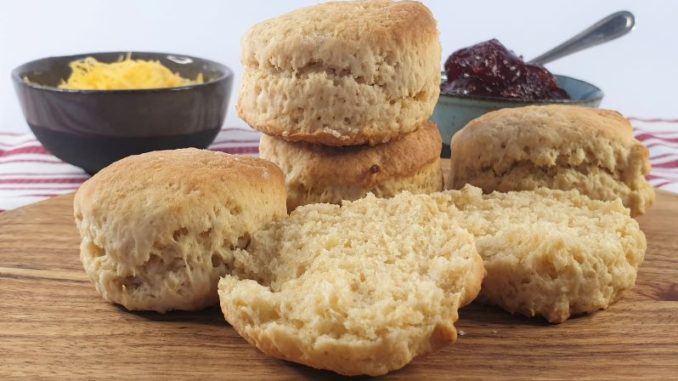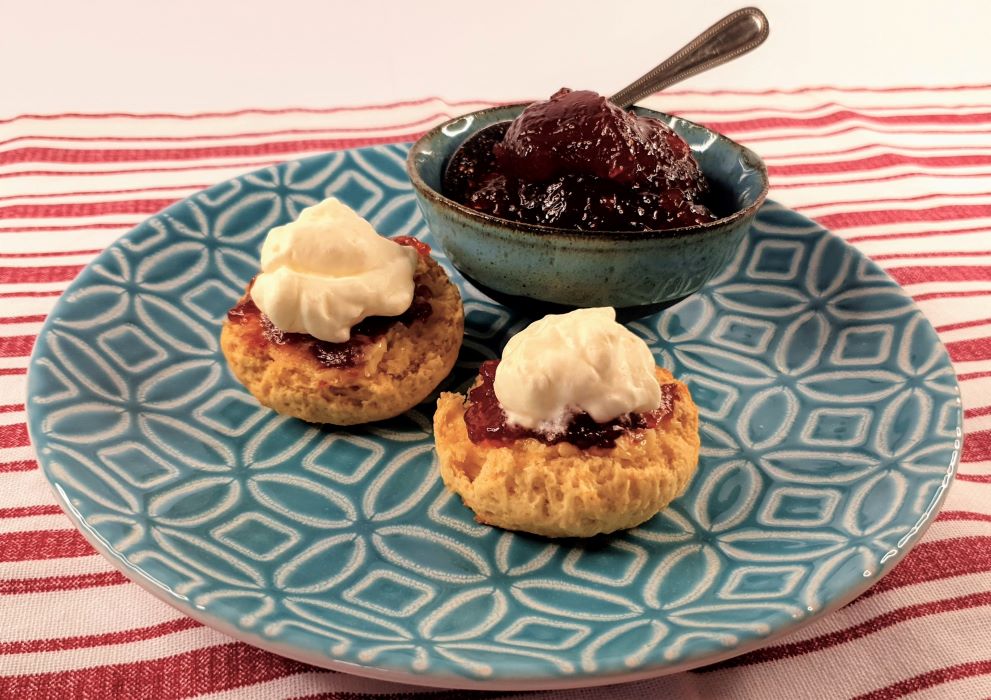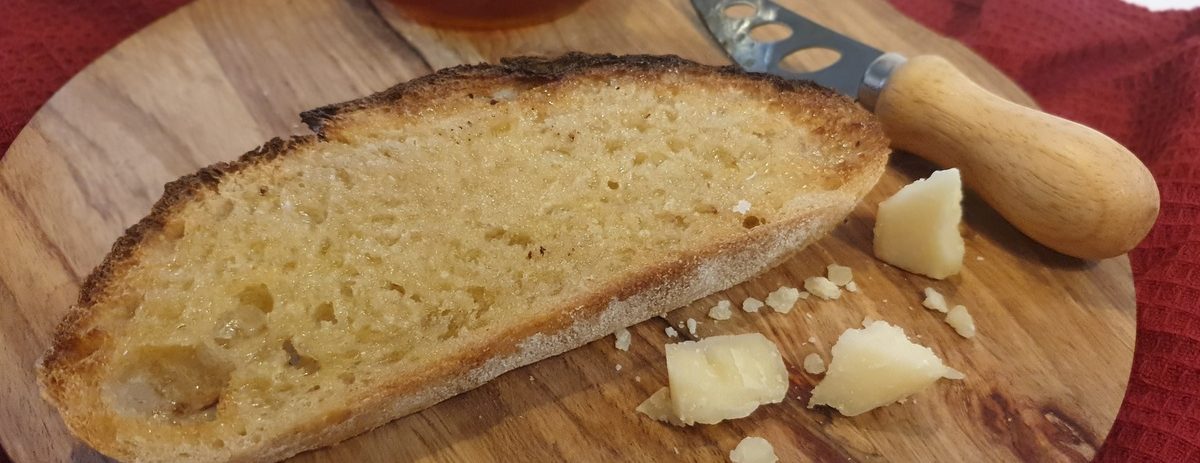
“I asked the maid in dulcet tone
To order me a buttered scone;
The silly girl has been and gone
And ordered me a buttered scone”~ Anonymous ~
Yes, that is the gist of the debate around scones. Do you pronounce scone to rhyme with gone or with tone? Then there’s also the question of cream first or jam first. I have decided to go with what the Queen and Mary Berry says and call it a scon, rhyming with “gone” and doing jam first and then cream. I have always had a more important issue when eating scones though – why does it have to feel as if you ate a spoon of neat baking powder when you’re done? That is until I found the recipe for Perfect Scones. This one came to me in a Clover recipe booklet out of a magazine. It uses normal flour rather than self-raising flour and therefore doesn’t leave your mouth feeling like sandpaper after eating.
Nostalgia with jam and cheese
We used to bake scones when I was growing up because it was really quick, easy and tasty. I even “wrote” my first recipe ever as a variation on scones! My mom used to make them often and I got to help and play with the offcuts of scone dough. I decided to make some sort of delicious Chelsea Buns by adding raisins to my scone dough and rolling it up. Unfortunately at the age of about seven, I didn’t know how to spell raisins in Afrikaans (“rosyntjies” is a tough one, you can’t argue), so I just wrote “dried grapes”! I also didn’t let my lack of spelling deter me from cutting out my recipe and pasting it into my mother’s recipe scrapbook.
Cream Tea
In those days we just ate scones with jam and cheese. We didn’t really bother with cream when baking scones at home. I am also 100% sure I have eaten sweet scones with butter and Bovril – this being my favourite spread of all time. If you get to put some cheese on top, even better! I do have memories of childhood vacations where my dad and my uncle drove us around for hours “sightseeing” until it was time for tea and we could look for a hotel that served tea and cream scones. Then we had the real deal with the jam and cream!
Faster than putting on your make-up
Weirdly, I never order scones from coffee shops nowadays, even though they often appear on menus. In my opinion, restaurant scones are usually far too big, too dry and mostly taste more like muffins than scones. I am therefore happy to bake my own Perfect Scones when the craving hits me. And as it literally takes no more than 30 minutes from switching on the oven until you have your scone topped with jam, it’s really less trouble than putting on make-up, getting the car out and finding a restaurant with edible scones!

Perfect Scones
Ingredients
- 2 cups all purpose flour
- 15 ml baking powder
- 2 ml salt
- 75 ml sugar
- 65 g butter, softened
- 1 egg
- 125 ml milk
Instructions
- Preheat the oven to 200°C and grease a baking sheet.
- Sift the dry ingredients together and then add the sugar and mix.
- Add the butter and rub the mixture with your fingertips until it resembles breadcrumbs.
- Measure the milk in a measuring jug, add the egg and mix with a fork until combined.
- Add all but about 25ml of the egg mixture to the flour mixture. Reserve the 25ml of egg mixture to glaze the scones before baking.
- Mix everything with a fork until all the dry ingredients have been combined.
- The dough should be very soft, but not too sticky. Add a tablespoon of flour if the dough is still very wet.
- Flour your hands and the surface you will be working on and turn the dough out.
- Softly roll the dough out to 15mm thick.
- Cut scones using a floured round cookie cutter or a drinking glass.
- Place the scones on the baking sheet just touching each other.
- Combine the offcuts of dough, roll out to 15mm again and cut more scones. The recipe makes about 12, depending on the size you make them.
- Glaze the top of the scones with the remaining egg mixture using a pastry brush.
- Bake for 12 - 15 minutes until the scones are pale brown on top. Serve with your choice of topping.
Notes
- I have learnt from Mary Berry that it is best to place the scones on the baking sheet just touching each other. This ensures that they don't topple over as they are rising.
- The scones in my pictures were cut using a drinking glass. They are slightly smaller than your average scone, but I like them that way as it gives me an excuse to eat more!
- If you do not mind the baking powder taste one sometimes get with scones, feel free to use 2 cups of self-raising flour and 5ml of baking powder (in stead of 15ml). The scones will probably rise a bit higher.
- If you are like me and you like savoury baking, leave out the sugar and add 1 cup of grated cheese for delicious cheese scones.



Leave a Reply